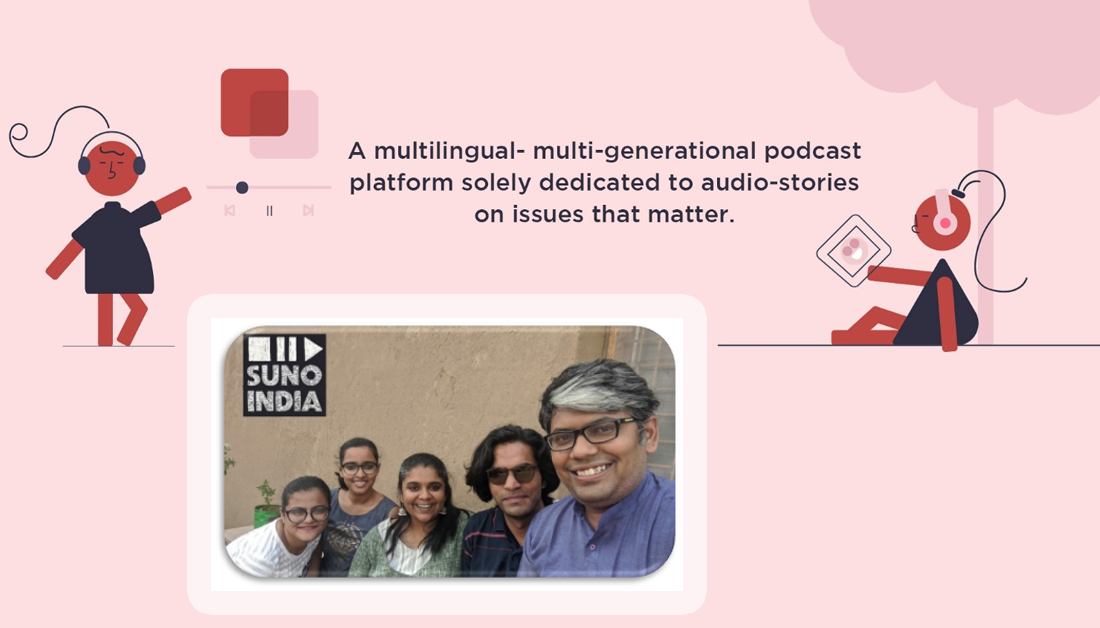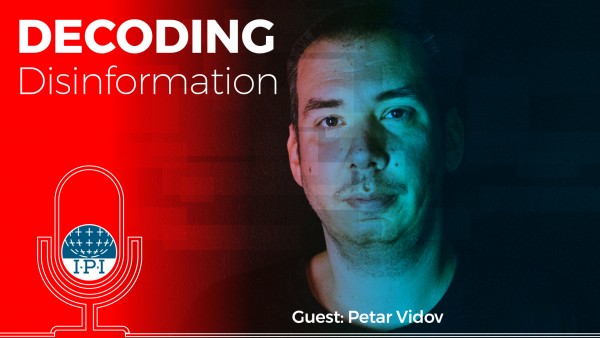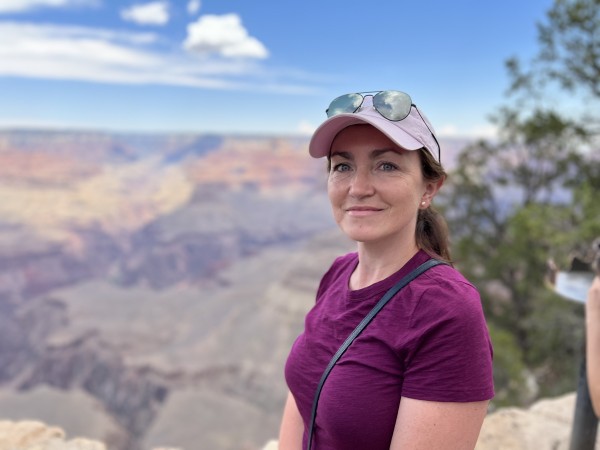Local Journalism Project Case Study: Suno (India)
The backstory:
Suno India is a podcasting media company that aims to get Indians from a range of language backgrounds to “listen up”. Launched in 2018, their journalistic mission is to use the audio medium to illuminate underreported issues while maintaining their reputation as credible, well-researched, and editorially independent. The podcasts are produced in Telugu, Hindi, English, and occasionally in Tamil and Urdu.
Audience:
Suno India is based in Hyderabad and New Delhi. They target regional language communities of Telugu, Tamil, and Hindi as well as English through their multilingual and multigenerational audio stories. Their audio stories, which are of a non-fiction current affairs style, cover a range of topics such as politics; international affairs from a South Asian perspective; LGBTQI+ issues; and science, enable them to remain accessible to even those who are not literate.
Their audience is mainly comprised of 18- to 45-year-olds from metro cities who are interested in current affairs. However, their regional-language shows are also popular with rural audiences. In 2021, they crossed the mark of one million listeners.
Their target audience differs based on each podcast. For instance, children are also a key component of their audience, with narrative podcasts such as “Kathey Chappava Ammama” targeted solely at children. These podcasts have been popular amongst the Telugu-speaking diaspora in Singapore and the U.S.
Value Proposition:
Their mission is to be the go-to platform for credible and well-researched multilingual audio content. Despite Telugu’s being the 11th most-spoken language in the country, it is underserved in the news media market. Suno India aims to fill the gap of news-led shows that are in these regional languages and illuminate the stories of these underrepresented communities. They are also contributing to developing narrative news in the audio ecosystem in India by developing the skills of journalists unfamiliar with podcasting.
The platform is changing the nature of India’s podcast culture, which rarely features reporting and journalism. Instead of the typical “bantering talk-shows” with strong personalities, Suno India features deeply reported narratives and story-telling. This is developing a niche area of slow journalism.
Products and Distribution:
Suno India produces podcasts. Their innovative use of the audio medium has allowed them to create a more intimate space where they can cover a broader range of topics and their sources can maintain a level of anonymity. They have 14 current shows, nine in English, and five in Hindi and Telugu.
Social media, particularly WhatsApp and Twitter, is used to distribute content, such as their successful two-minute news bulletins that were able to provide COVID-19 updates throughout the pandemic.
The Team:
The editorial team is small, comprising of six people: three co-founders plus a contributing editor, a reporter based in Kolkata, and a research and communications officer. They are also assisted by two advisors and a range of freelance contributors.
Business Model:
Suno India was set up as a for-profit enterprise. Their use of audio is cost-efficient since it is a “low entry-medium”, which has the advantage of enabling them to work with a range of people remotely. They have received grants from organizations such as Google News Initiative, Internews and the Independent and Public-Spirited Media Foundation and have an angel investor (film producer Shobu Yarlagadda). Additionally, they offer creative services in production of audio and podcasts for other companies. They also encourage monthly or one-time contributions, articulating such audience support as critical to editorial independence.
Trust/Misinformation:
Misinformation continues to pose a challenge for the platform. The reluctance of authorities to make on-the-record statements and provide official data makes verification challenging.
Throughout the COVID-19 pandemic, Suno India produced “myth-buster” episodes, which featured information-based content that was able to fact-check the news and explore concepts such as social distancing. “Corona Flashcards” in collaboration with an Iranian illustrator Azam were also developed in English, Telugu, and Hindi and were printed out in poster form. These flashcards featured frequently asked questions and practical tips.
The future:
Suno India has been looking for alternative models, such as subscription or membership models. They are a part of the first cohort of the Google News Initiative Startup Lab India supported by Echoes and Digipub India,, which aims to support startups that “give voice to underrepresented communities”. After successfully making it through an elaborate process that involved assessing factors such as innovation, the startup has made to the community, Suno India was one of the 10 startups selected out of 70 applicants. The 16-week program is geared to help them to learn about product development, understanding their audience better, and strengthening sustainability.
There are a number of regional content shows that are also being developed that will feed into their regional audience’s eagerness to learn more about culture and traditions.
In their words:
“As a platform we believe in processing information slowly, synthesizing it thoroughly, and only then putting it out”
“Our audience is the average middle-class person. We don’t know if farmers themselves are listening, but others are listening to farmers we feature on our episodes. Shaking people up and making them think about other communities, and what’s happening to others. This is what our show does.”
“What’s working for us is that listening doesn’t need literacy. Also that our files, smaller ones, just 10 MB, can be downloaded and shared on WhatsApp.”
“Very few had taken the leap into narrative or reported-narrative podcasts. No one had done a series based on a single topic. That’s the gap we wanted to fill.”
“We consciously look for the stories that need to be told. So we try to remain true to our mission and prioritize looking for underreported or underrepresented communities and telling those stories”
“We’ve realized from the regional audience that they’re very keen to know a lot about their own region and their own culture and their own traditions. So I hope that the upcoming content and all the shows that we are planning will feed into that appetite.”
“As a journalist you can live in your own head and you might be thinking you’re telling an important story. But is it really connecting with the larger audience? Is it making them take that action?”
“I think that having that sense of security for any startup is important. For us that’s what Shobu (Shobu Yarlagadda, angel investor) has offered. He’s giving us time and space to experiment, make mistakes, and learn from them.”
Source for information and views in this case study: Interview with DVL Padma Priya, founder and editorial lead, Suno India.
This story is part of IPI’s Local Journalism Project. The publication of these case studies – part of IPI’s wider work mapping, networking and supporting quality innovative media serving local communities – is supported by the Friedrich Naumann Foundation.



